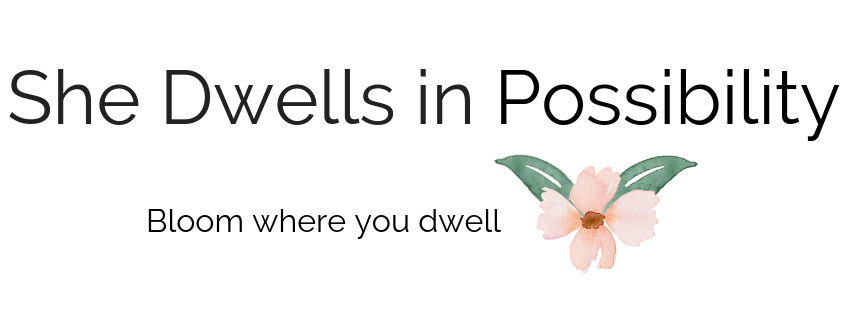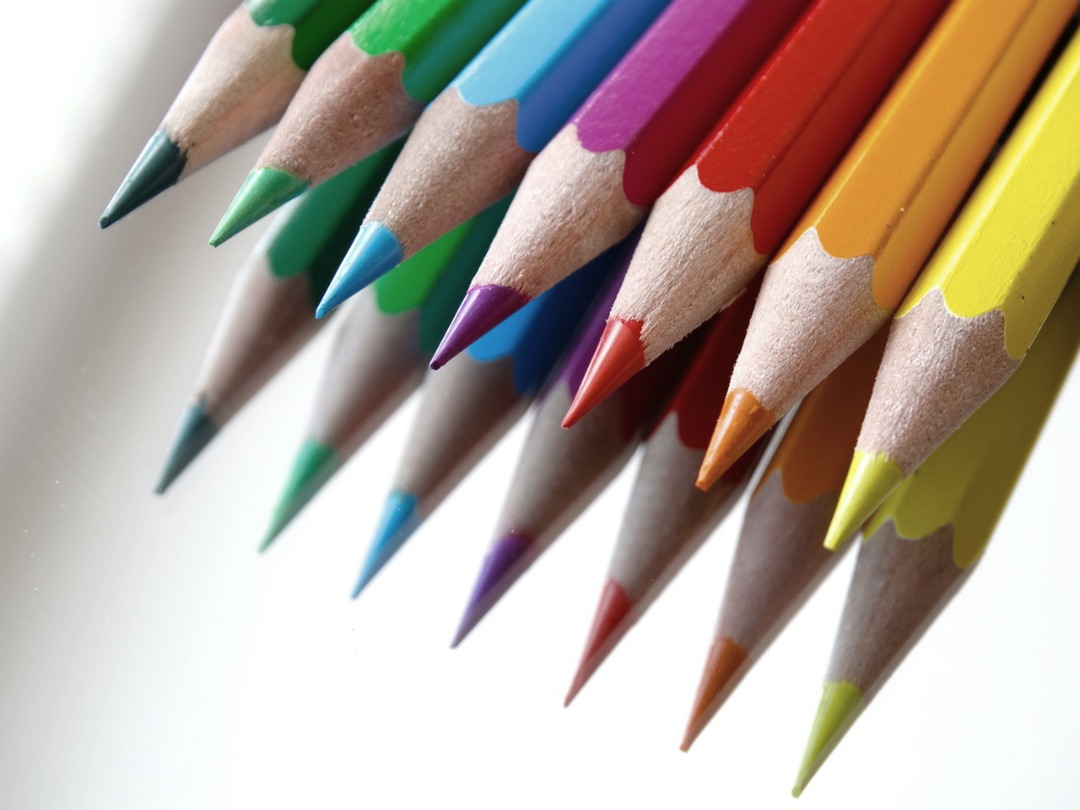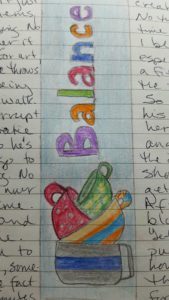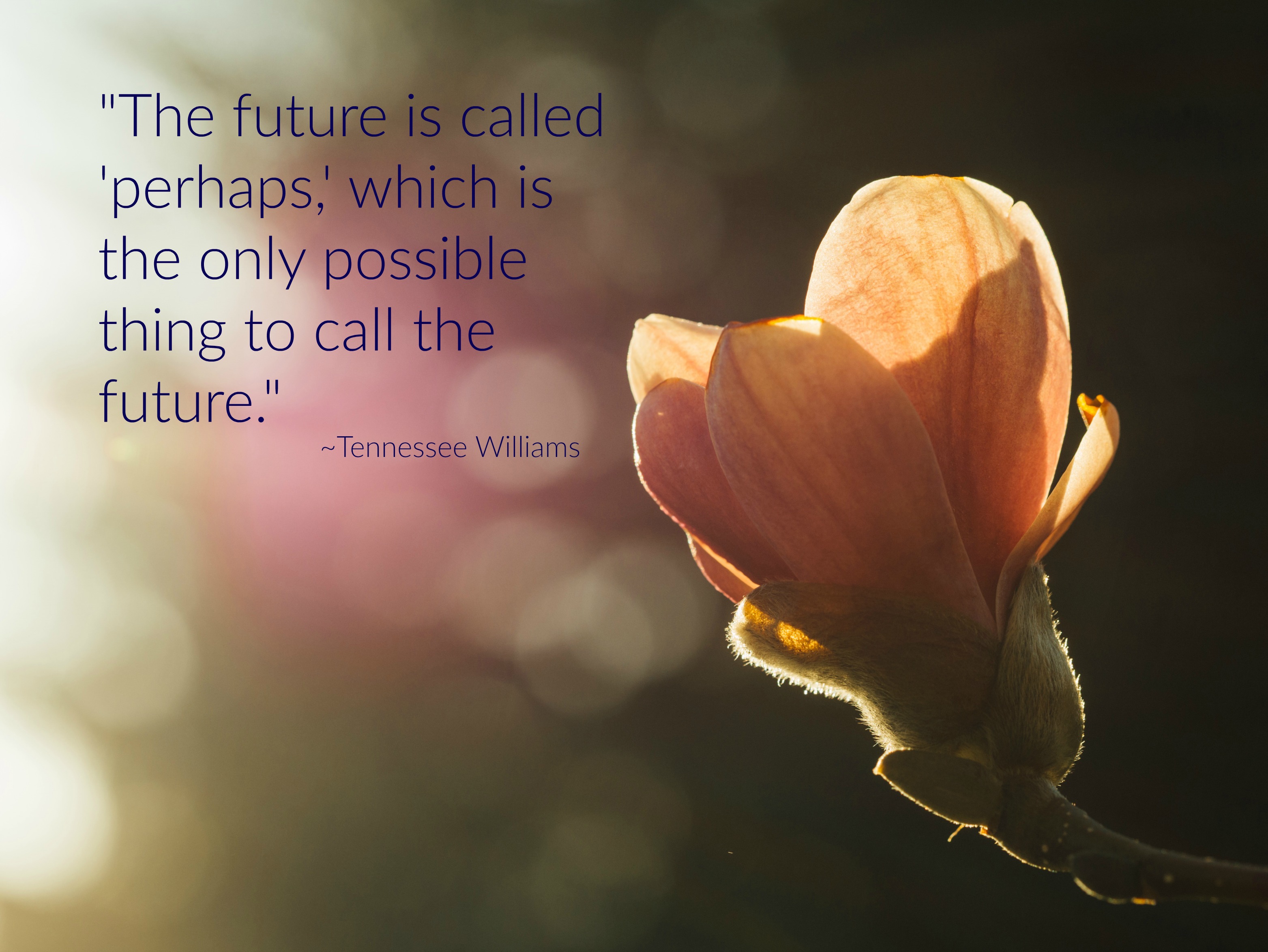If you’re a word person, like I am, then the idea of keeping a journal is nothing new. I kept a diary through all the years I was in junior high and high school. It helped me sort through things I was feeling–and it gave me a lot of valuable writing practice. I tried, at various times while I was in college, to keep a journal again. But nothing really clicked with me until I discovered art journaling a couple of months ago.
That’s when I signed up for the free 30 Days of Art Journaling class at Determined to Shine. (You may have read the story behind the inception of Determined to Shine in Allyson Bright’s moving guest post for this blog.) And that’s when I discovered that art journaling is a thing. Don’t be alarmed if you have no idea what an art journal might be–that just means you’re in the same boat I occupied until recently.
What is an art journal, then? The definition is going to vary, depending on who you talk to. For some artists, it’s a place to practice new techniques or plan big projects. For other people, it’s a place to combine words and images. (That’s how I’ve used my journal most of the time, since taking Allyson’s class.) There are also people who use art journals as a place to deal with their feelings through art, rather than words. If you aren’t a word person, that might be the best way to use an art journal. It serves essentially the same purpose as a diary, but makes use of a different medium.
I loved to draw, when I was younger. For various reasons, I didn’t carry that interest into my adulthood. When I learned about art journaling, though, I also learned that it’s a safe space for drawing. Since this isn’t art I’m planning to show anyone, it’s easier for me to do whatever I feel like doing. I don’t have to worry about any judgement. If a drawing isn’t perfect–and it often isn’t–then I change it. I make it larger to hide mistakes. I draw over the top of something I don’t like and turn it into something else.
Or I don’t. Sometimes I leave it alone, mistakes and all. Sometimes I just add a border to the page and call it good.
The point is, my art journal is as a private as a diary would be. No one else is going to see it, so there’s no need to be self-conscious, to censor myself, or to beat myself up about my lack of artistic skill.
If art journaling sounds appealing, but you’re unsure how to get started, I’d highly recommend signing up for the free class I linked above. Every day, you’ll get a prompt by email. There’s a private Facebook classroom where you can share your work, if you want–but there’s no obligation to do so. I found it helpful to see the many ways people were approaching each prompt.
If that doesn’t sound appealing, head over to Pinterest and search for “art journaling prompts.” You’ll find lists organized by month, by topic (like gratitude), by a specific project (like self-discovery), and many other suggestions for ways to use your art journal. That might be all you need to get going.
Once you have a starting point, I’d also recommend doing a search for “art journaling.” You’ll see lots of gorgeous images that might give you ideas or inspire your own projects. I started a new Pinterest board for art journaling after I’d been in Allyson’s class for a few weeks. I return to it for ideas and inspiration whenever I feel stuck.
What do you need to get started? Paper and pencils. Seriously, that’s it. There are a variety of art journaling kits on sale in various places, but you don’t necessarily need them. If you have art supplies already, this is a way to put them to use. When I got started, I had a package of colored pencils I’d bought to use during our trip to Antigua. I also had random art supplies left over from when my kids still lived at home. After I discovered Allyson’s class, I expanded my collection of colored pencils and learned how to use some blending tools.
I’ve also begun to learn a few things about using watercolor pencils, Copic markers, and alcohol inks, though I haven’t branched out into using them yet. Just learning about these different materials has nudged my brain in new directions. That knowledge helps me envision images different than those I’d be able to create with the tools I have on hand–and that leads to a new kid of creativity.
I spent years telling people that I wasn’t a crafty person. I’m not sure exactly what I meant by that. Probably this was something I said to differentiate myself from my sister, who is an excellent seamstress and always involved in one sort of craft project or another. Maybe I worried about impinging on her territory.
But this might have been something I said to clarify that I’d left drawing behind–it was a childhood occupation and nothing more, certainly nothing I’d claim to be good at now. And that’s why I’m also fairly certain this was something I said to make sure no one would ever ask me to do anything I felt I couldn’t do well. That would be consistent with the way I tend to live my life–always striving for perfection, even as I know it’s unattainable.
Art journaling has gone a long way toward helping me re-learn that lesson on a regular basis. My art journal is a place where I can be imperfect without feeling worried about what that means. And I have to tell you–being voluntarily imperfect is kind of a relief.






No Comments